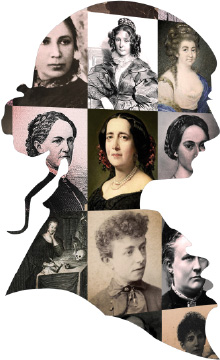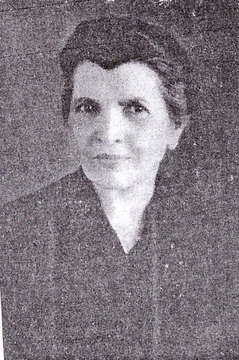Cveta Bingulac
1874–1950| Date of birth | October 09, 1874 |
|---|---|
| Date of death | January 21, 1950 |
| Web address |
Personal situation
October 8, 1874 – Cveta was born into a family of craftsmen from Vukovar, where she finished elementary school. Thanks to her family’s good standing, she was able to pursue further education.
1898 – She graduated from the Novi Sad High School for Girls
1902 – Cveta graduated from the School for Women Teachers in Sombor and Zagreb.
She had a gift for painting, and wanted to pursue a career as a painter, but, obeying her mother’s wishes, became a teacher instead. She began teaching at a Serbian boarding school in Zagreb. She later worked as a teacher in Srem. From 1908 up until the outbreak of World War I, she moved around quite a lot, working as a teacher in small towns and villages.
1914 – After the outbreak of the First World War, she signed up as a nurse to help the sick and the wounded.
From 1915 to 1918 – Cveta spent the greater part of the war as an emigrant in Ajaccio, Corsica. After the end of the war, she returned to her homeland, where she continued her service in Prilep.
1924 – She passed the Exam in Advanced Pedagogy in Belgrade.
1925 – Cveta moved to Novi Sad, where she worked as a teacher at the School for Civil Engineering until her retirement in 1939.
1940 – January 21, 1950, Cveta settled down in Belgrade where she spent the remainder of her life. She never married and never had any children.
| Place of birth | Vukovar |
|---|---|
| Place(s) of residence | Croatia, France, and Serbia |
| Place of death | Beograd |
| Nationality | Serbian |
| First language(s) | Serbian |
| Marital status | Single |
| Education | School education |
Professional situation
She published her first works in the magazines she worked for, such as Gusle (The Gusle, 1893) and Mali žurnal (The Little Journal, 1897). In the year 1893 she published her first poem "Guslaru" ("To the Gusle Player"). Her works were published and signed with her own name.
She worked for various magazines and newspapers. Her last poem was published in 1914. After 1918, she took up painting again and also traditional embroidery. She was the chairwoman of Narodna omladina (The National Youth) and the initiator of the action for collective theatre visits in 1938.
| Profession(s) and other activities | poet and teacher/governess |
|---|---|
| Language(s) in which she wrote | Serbian |
| Financial aspects of her career | Salary |
Works by this author
Articles and other similar texts
- Guslaru 1898.
- Srpkinja u ratu 1913
- Srpska majka 1913
Reception
Reception during lifetime
- Učiteljice : Cveta Bingulčeva (1913)
- Zambak-hanum (1924)
Authors read by this author
* Only authors in Knjiženstvo DB are shown



